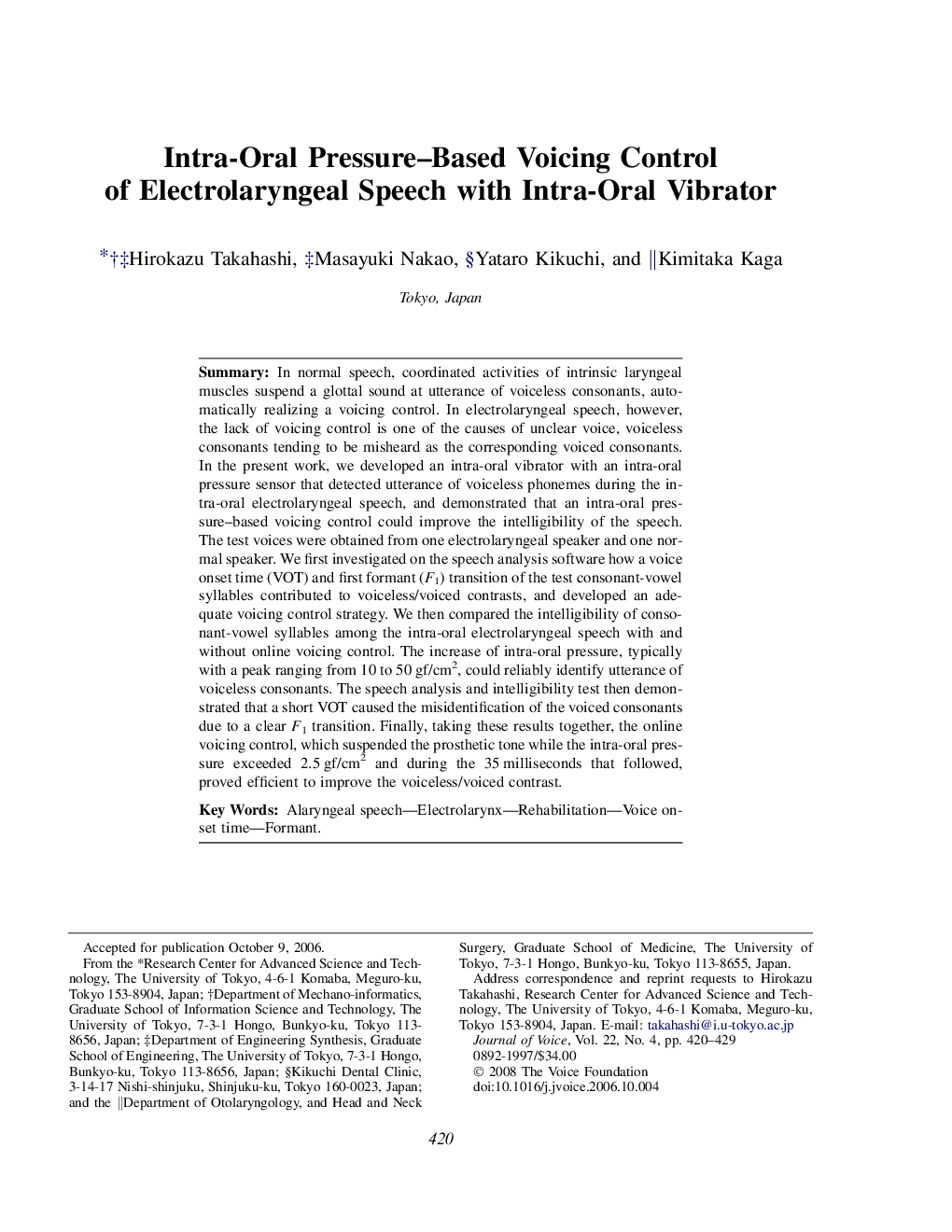| Article ID | Journal | Published Year | Pages | File Type |
|---|---|---|---|---|
| 1102241 | Journal of Voice | 2008 | 10 Pages |
SummaryIn normal speech, coordinated activities of intrinsic laryngeal muscles suspend a glottal sound at utterance of voiceless consonants, automatically realizing a voicing control. In electrolaryngeal speech, however, the lack of voicing control is one of the causes of unclear voice, voiceless consonants tending to be misheard as the corresponding voiced consonants. In the present work, we developed an intra-oral vibrator with an intra-oral pressure sensor that detected utterance of voiceless phonemes during the intra-oral electrolaryngeal speech, and demonstrated that an intra-oral pressure–based voicing control could improve the intelligibility of the speech. The test voices were obtained from one electrolaryngeal speaker and one normal speaker. We first investigated on the speech analysis software how a voice onset time (VOT) and first formant (F1) transition of the test consonant-vowel syllables contributed to voiceless/voiced contrasts, and developed an adequate voicing control strategy. We then compared the intelligibility of consonant-vowel syllables among the intra-oral electrolaryngeal speech with and without online voicing control. The increase of intra-oral pressure, typically with a peak ranging from 10 to 50 gf/cm2, could reliably identify utterance of voiceless consonants. The speech analysis and intelligibility test then demonstrated that a short VOT caused the misidentification of the voiced consonants due to a clear F1 transition. Finally, taking these results together, the online voicing control, which suspended the prosthetic tone while the intra-oral pressure exceeded 2.5 gf/cm2 and during the 35 milliseconds that followed, proved efficient to improve the voiceless/voiced contrast.
